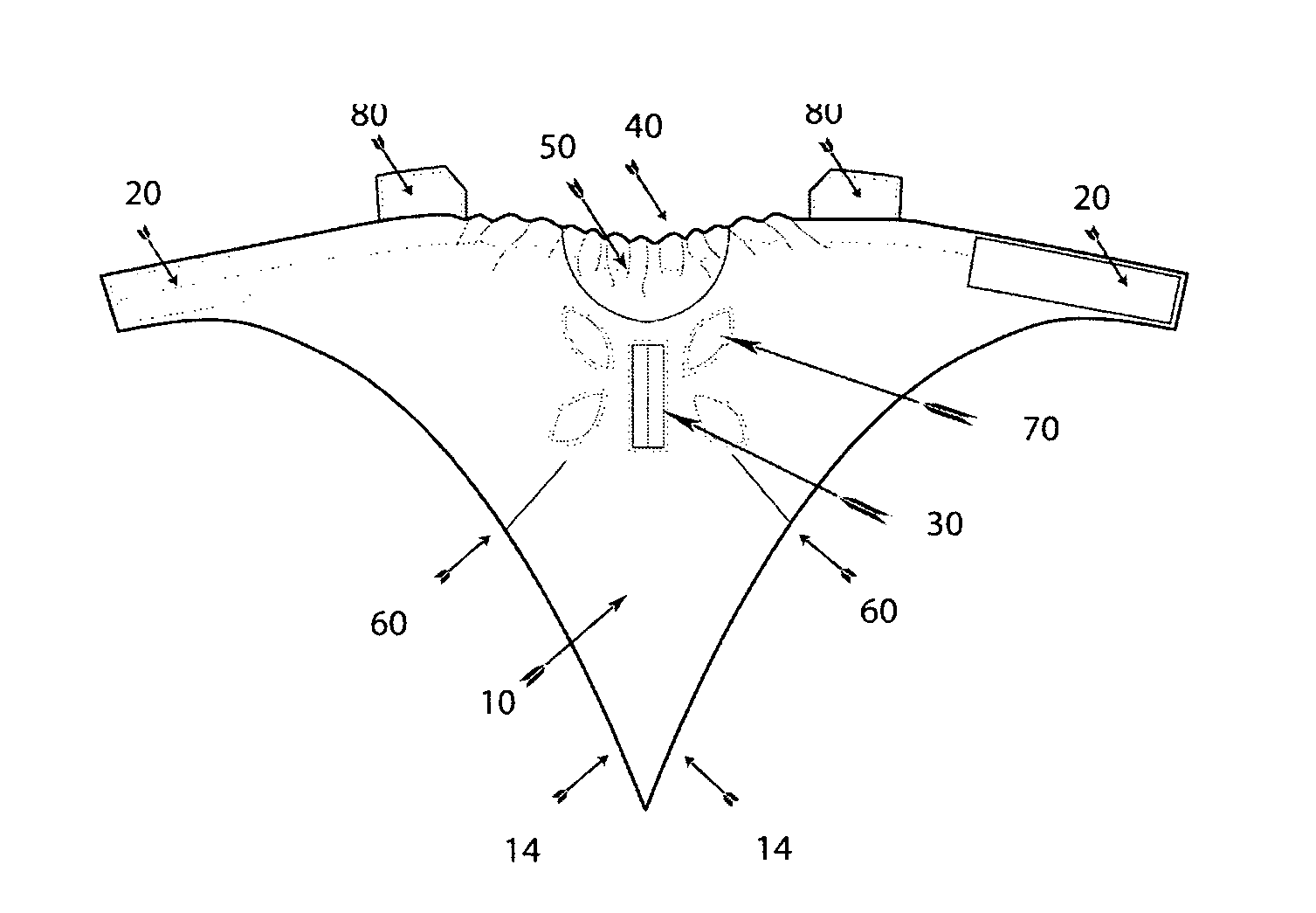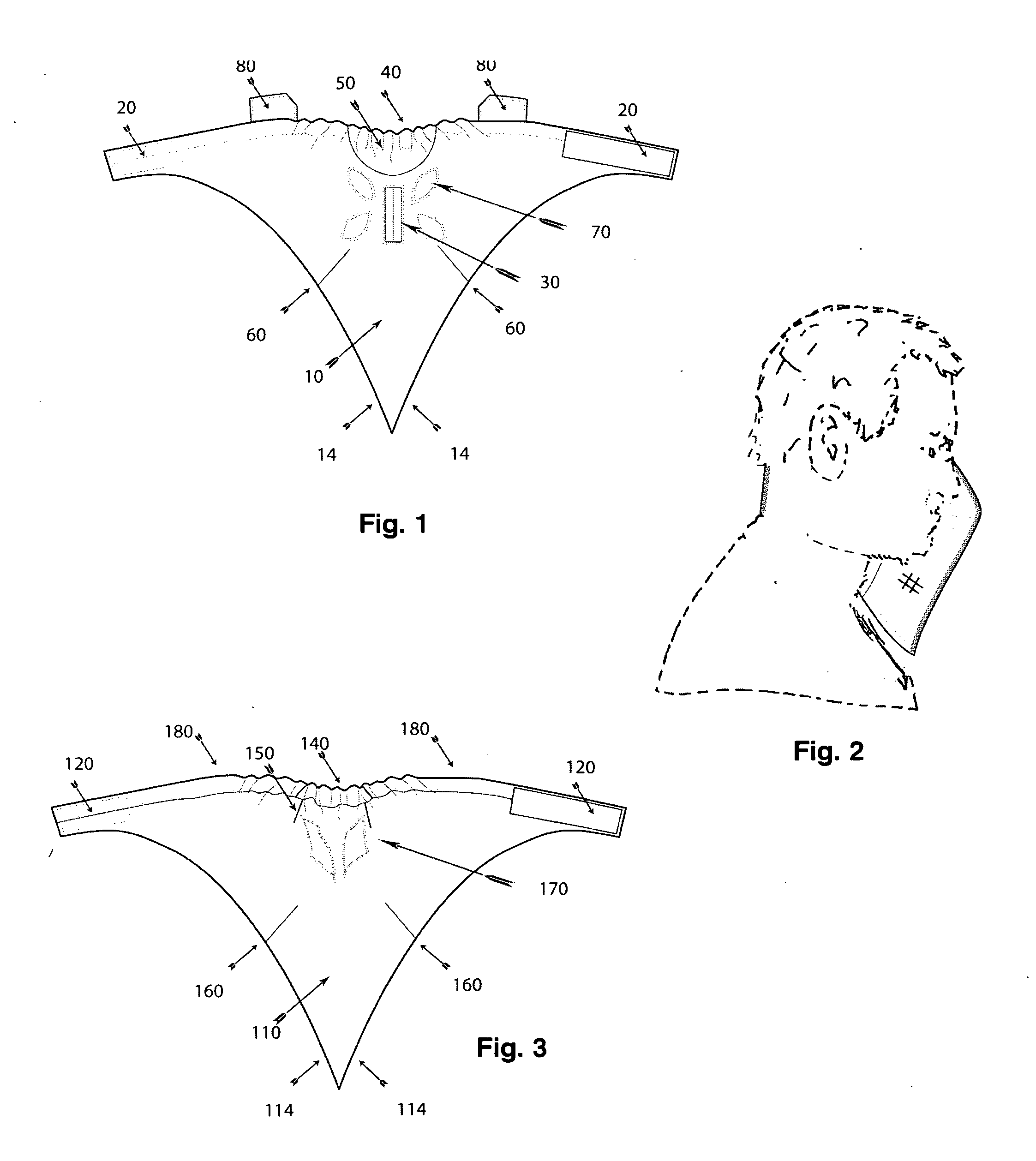Tailored and vented facial garment
a facial garment and ventilation technology, applied in protective garments, headwear caps, glasses, etc., can solve the problems of not being adjustable, not very warm inhaled air, and leaving the user's mouth and eyes exposed, so as to prevent fogging the user's eyewear
- Summary
- Abstract
- Description
- Claims
- Application Information
AI Technical Summary
Benefits of technology
Problems solved by technology
Method used
Image
Examples
Embodiment Construction
[0017]The present invention overcomes the challenges of protecting the wearer by providing a waterproof shell that forms a vented pocket in front of the user's mouth and nose that warms the air prior to breathing without allowing moist air to escape upwards and fog the user's eyewear.
[0018]Referring generally to FIG. 1, a particular embodiment of the invention is described. As shown in FIG. 1, the invention includes a substantially triangular shape main body (10) having an inner layer (11) and an outer layer (12) of material. As such, main body (10) has an elongated upper edge (13) and two lower edges (14). Inner layer (11) is preferably a soft, lightweight fabric which dries easily and is comfortable when making contact with the skin. In a particular embodiment, inner layer (11) is a short nap fleece that doesn't collect substantial water between its fibers. Outer layer (12) is preferably a lightweight, water and wind proof fabric.
[0019]In a particular embodiment, upper edge (13) i...
PUM
 Login to View More
Login to View More Abstract
Description
Claims
Application Information
 Login to View More
Login to View More - R&D
- Intellectual Property
- Life Sciences
- Materials
- Tech Scout
- Unparalleled Data Quality
- Higher Quality Content
- 60% Fewer Hallucinations
Browse by: Latest US Patents, China's latest patents, Technical Efficacy Thesaurus, Application Domain, Technology Topic, Popular Technical Reports.
© 2025 PatSnap. All rights reserved.Legal|Privacy policy|Modern Slavery Act Transparency Statement|Sitemap|About US| Contact US: help@patsnap.com


